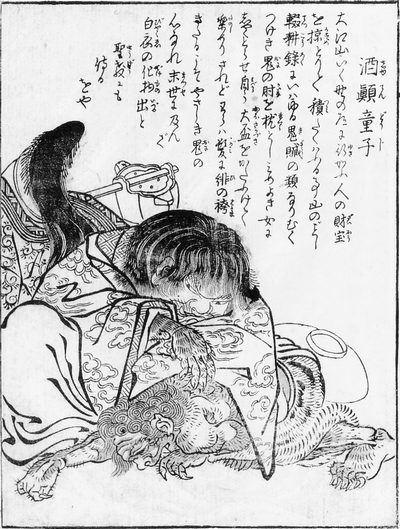
Today is Friday the thirteenth. A day of misfortune and tragedy. In a time when the pandemic Coronavirus disease (COVID-19) spreads rampant across the world. Similarly, today’s yokai, Kasha, infects Japanese people with fear and terror. It is the ultimate corpse thief. The demonic cat that robs funerals and bring the dead to hell.
Ancient oral tales, about hellish kasha, are passed down over many generations. Stories all across Japan tell of the feline yokai appearing suddenly with lightning and rain. And yet, it is engulfed by infernal flames. Pouncing from the sky, snatching up the sinful dead and returning to the nether side of hell.

Changing Forms
Interestingly enough, these stories does not really describe the kasha in great detail. Early Japan artists depict it as a great red oni pulling a fiery cart full of corpses. This illustration reminds me of wanyudo, aka the Soultaker, also an infernal being that terrorises the residents of Kyoto.
But more commonly, kasha is identified as a hellish yokai with cat-like features. A supernatural kaibyo who carries a rotting corpse across the roof tops. This is striking similar to nekomata, a ferocious feline yokai that have an affinity to the dying and the dead. In fact, some experts believe kasha is an evolved form of nekomata.
Also the Graverobber
When dark ominous clouds appear during a funeral procession, a kasha is bound to strike at the corpse of the wicked man. Together with fearsome winds, the great feline pounces at the coffin. Then it drags out the sinful dead and steals it away. Some tales, describe the kasha desecrating the corpse by tearing it into many pieces. Then it scatters the limbs all over the region, among tall trees, jagged rocks and cliff edges.
Alternatively, there are eye-witness accounts of the feline yokai digging into the grave of the sinful. It abducts the dead body and crushes the skull and bones without mercy. As such some graverobber activities are attributed to the kasha, especially those with missing corpses.
Rituals and Protection
Nonetheless, the dead can be protected from these infernal creatures. A venerable monk could say a holy prayer or sign his protective seal on the coffin. Additionally, at desperate times, he can throw his onenju (念珠) at the coffin providing an extra barrier against the kasha.
If there are no monks or rosaries nearby, just run away flinging your hands around animatedly. So that, the kasha do not mistake you for the dead corpse. Better the dead wicked man than you.
Yokai Details
- name: kasha ( kah-sha )
- kanji: 火車 ( かしゃ )
- meaning: fire cart
- abilities:
- pyrokinesis — generate extreme heat and produce fire
- weather control — incite dark storms and strong wind
- flight — ability to fly (via weather control)









